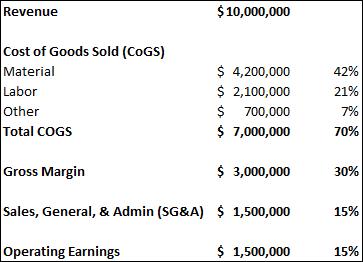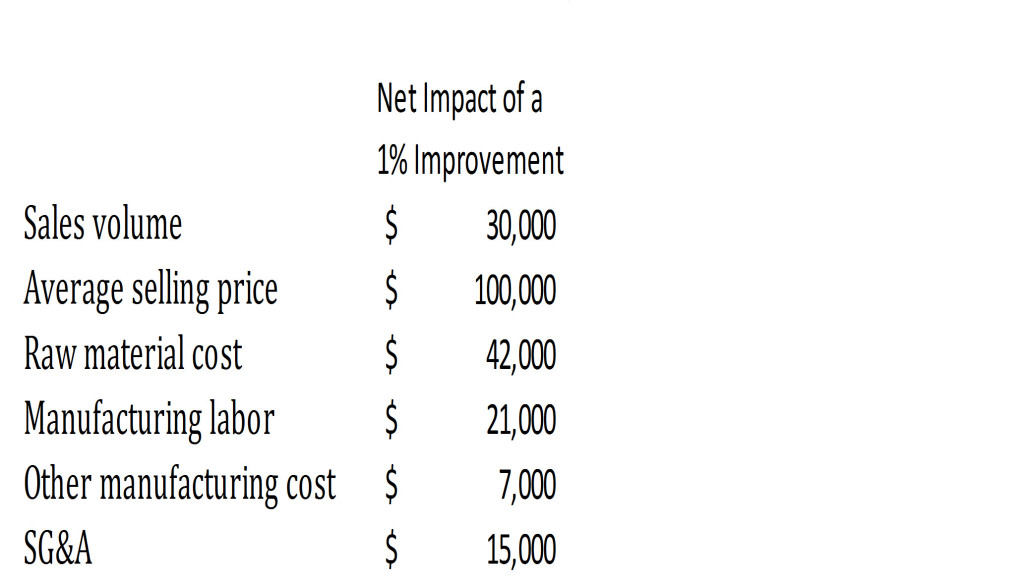
If you’re in B2B sales or marketing, it’s your job to understand the prospect’s business well enough to know exactly how you can deliver value. In other words, you need to know where the big drivers of value exist within your customers’ businesses. Let’s take a simple example.
Suppose that you sell an offering into a manufacturing environment and your typical customer’s income statement looks something like this:

Now imagine that your offering, depending on which features you use and how you choose to deploy it, could have several impacts. For example, it could:
- Increase customer’s sales volume
- Increase customer’s average selling price
- Decrease customer’s raw material cost
- Decrease customer’s manufacturing labor
- Decrease customer’s other manufacturing cost
- Decrease customer’s SG&A
So, which of the above benefits should you focus on? One way to think about it is to estimate the magnitude of the value created for each of the potential impacts. For instance, if each of the benefits listed above would yield a 1% improvement, the net impact would break down as follows:
 From this perspective, you can see that you can achieve the highest possible value for this type of customer by focusing on increasing their average selling price. The lowest value you offer is in the area of “other manufacturing costs.” If you want to showcase the highest value possible to your customer, then you should prioritize your offering’s benefits in the following order:
From this perspective, you can see that you can achieve the highest possible value for this type of customer by focusing on increasing their average selling price. The lowest value you offer is in the area of “other manufacturing costs.” If you want to showcase the highest value possible to your customer, then you should prioritize your offering’s benefits in the following order:
- Average selling price
- Raw material cost
- Sales volume
- Manufacturing labor
- SG&A
- Other manufacturing cost
This sounds pretty straightforward, but I guarantee that many sellers and marketers are engaging in various self-defeating behaviors by choosing to focus on features that create little or no net value. For example, sometimes engineering will focus on developing products that reduce raw material costs, despite the fact that you could develop or enhance an existing offering that will have a greater impact on the customer’s average selling price. Or, sales will pitch the benefits of a one percent improvement in sales volume, when in fact your highest value proposition is in the area of “manufacturing labor.”
Remember that each customer will have a different financial framework, so it makes sense to constantly reevaluate the order in which you prioritize the benefits of your offering. Whether you’re working on closing a deal with a prospect or looking to develop new features or products, you must first understand where you have the most potential to provide the highest value possible for your customer.
In an upcoming post we’ll explore a related issue: creating a sense of urgency by highlighting the biggest sources of value.








